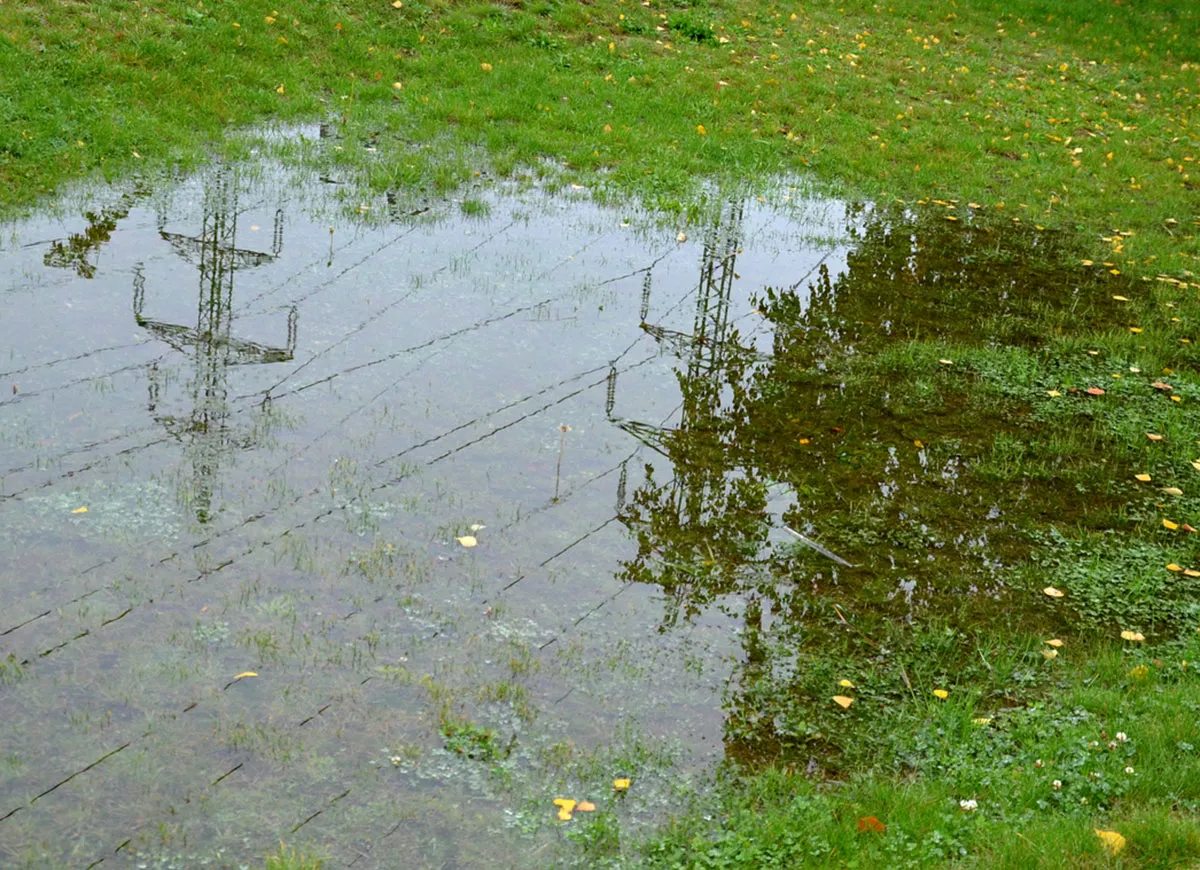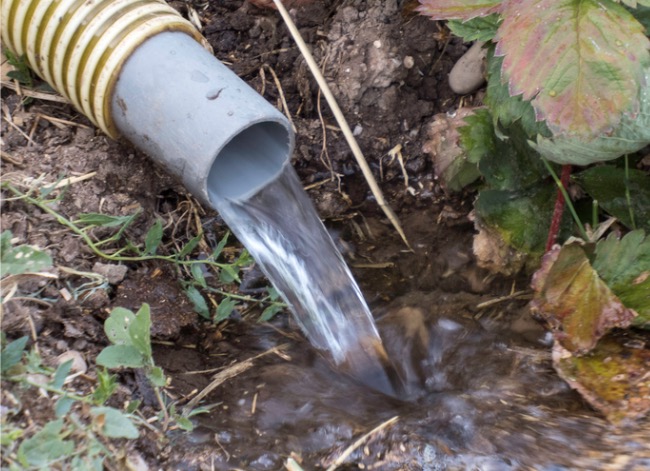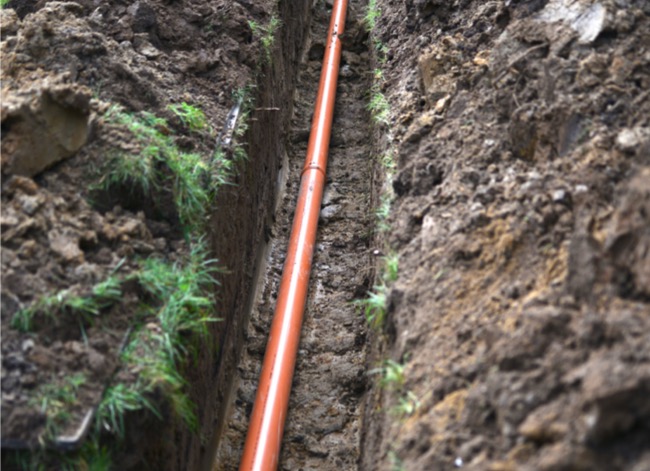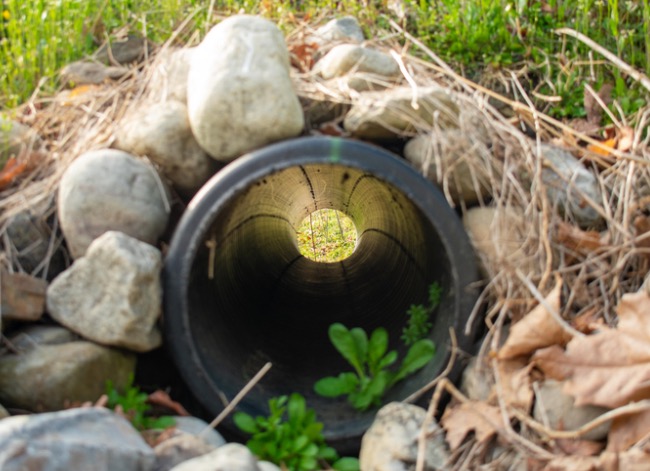We may earn revenue from the products available on this page and participate in affiliate programs. Learn More ›
A French drain can do wonders for a damp basement by keeping water from penetrating the foundation and soaking the space inside. Whether outside or inside, these drains utilize plastic pipes with holes drilled in the bottom to collect rain and send it downhill, removing it before water can damage the home.
But, just like any other type of drain, French drains are susceptible to clogging. Soil and debris have a tendency to build up inside the pipes, eventually stopping water from flowing altogether. To avoid letting water back up into your home, follow this French drain cleaning guide.
DO test the drain.
Even if you’re just planning to do annual maintenance, most French drain experts suggest it’s helpful to assess the condition of the drain first. You can test the drain by flooding it to see how well it handles the excess water.
The first step to testing requires locating the ground-level access point for your French drain. Generally speaking, this will be a grate sticking out above the ground, the end of a gutter downspout, or simply a pipe above ground. Remove the cap or fitting and run a hose down the pipe. Most systems in good condition can handle the volume of water from a hose. If the water backs up, there’s an issue with the drain, and it’s likely a blockage.
RELATED: 12 Ways to Fix a Soggy Yard
DON’T ignore a clogged French drain.
There are quite a few reasons why a French drain might have a clog somewhere in the pipe. The weep holes in the bottom of the pipe are relatively large to allow for the optimum flow of groundwater, so they don’t filter out sediment or mud. Also, plant and tree roots can work their way into the pipe. Whatever the reason for the clog, it’s important not to ignore it.
If your home had a French drain when you moved in, you may not be able to appreciate exactly what it does. French drains are only installed on properties prone or likely to flood. These systems collect water and move it away from the basement walls so it won’t penetrate. If it does, it can cause damp, mold, structural damage, and more problems. For these reasons, it’s important to stay on top of maintaining a French drain.

DO clean out the drain with a pressure washer.
The gentlest and easiest way to clean a French drain is to use a pressure washer. These handy tools have onboard pumps that take standard water pressure and ramp it up, forcing it out a tiny orifice at the end of a wand. Recommended to do annually, this method is easy and will not damage the pipes.
All this method requires is placing the nozzle in the pipe and blasting some water toward the clog. It helps to change the angle of the pipe if possible. If the clog isn’t too solid, this method can break it down slowly until water is able to clear the drain.
This method is most helpful when spraying a clog near the end of the drain with unimpeded access to the pipe. If you’re spraying from behind the clog, the pipe may fill with water before it clears the clog.
DON’T stand over the drain opening while cleaning.
Whether you’re spraying into a hole in the ground or up a pipe, it’s a good idea to keep relatively clear of the end of the drain. A pressure washer won’t be able to remove a solid clog right away, so there’s a good chance that the water pressure will shoot down the pipe, hit the clog, and ramp back up and out of the pipe toward anyone standing in front of it. And that water isn’t coming out clean.
For that reason, stand to the side of the pipe, and it’s a good idea to wear safety glasses to protect your eyes from splashes and sediment. Also, be sure to keep your hand away from the end of the nozzle as the pressure at the orifice is enough to cut skin and cause nerve damage.

RELATED: How to Build a Rain Garden—and Why You Should
DO use a heavy-duty drain snake to clear stubborn clogs.
Pressure washing is a light-duty method and won’t damage the pipes, but it’s often not enough to get through stubborn clogs. Tree and plant roots, compacted mud, and even small rocks can create a barrier that a pressure washer can’t handle.
For those tough clogs, use a heavy-duty snake. These machines have powerful motors that spin a steel cable with a claw on the end, breaking up anything that gets in its way (though it’s not as fast a process as it sounds). They can be rented at most tool rental locations, and they have the power to break through very tough clogs. Simply explain to the rental clerk exactly how you want to use the snake, and they will install the best claw (or head) for the job.
DON’T rush when using a snake.
Snakes are powerful tools, and they can be dangerous if you use them incorrectly. They can wrap around the hand of the user and cause potentially serious injury, and the claw can flail around unpredictably when it’s not in the pipe. Also, always wear leather gloves and eye protection when working with a drain snake.
For these reasons, you won’t want to rush using a drain snake. When the drain hits an elbow fitting or an obstruction, it will feel like it can’t go any further. Simply back the snake off a little and gently send it forward, taking your time and allowing it to clear the clog or turn on its own. Once the drain snake makes its way through all of the obstructions, the drain is likely clear.
DO inspect the ground around the French drain for damages and potential problems.
Not all French drain drainage issues are caused by clogs within the pipe, so it’s also important to check the ground around the system. Potential issues can include clogs above the pipe caused by compacted soil and thick layers of sediment that prevent water from making its way to the weep holes.
Nearby trees can send roots under or over the pipe, and these roots can change the pipe’s pitch, separate connections, and cause many other issues. If you’re noticing roots near the surface, sinking, or heaving in the ground around the system, it might be a good idea to take a closer look at what’s going on below ground.



